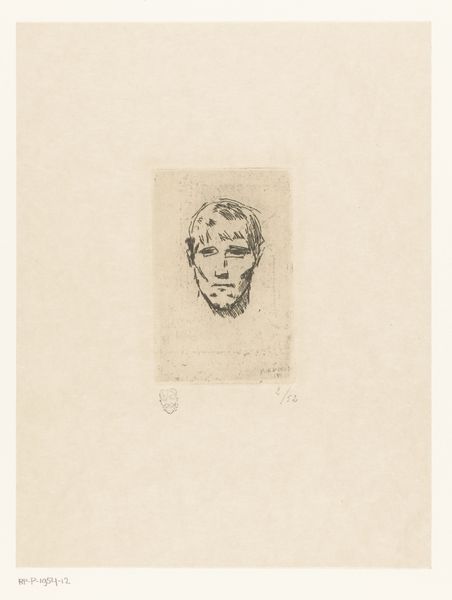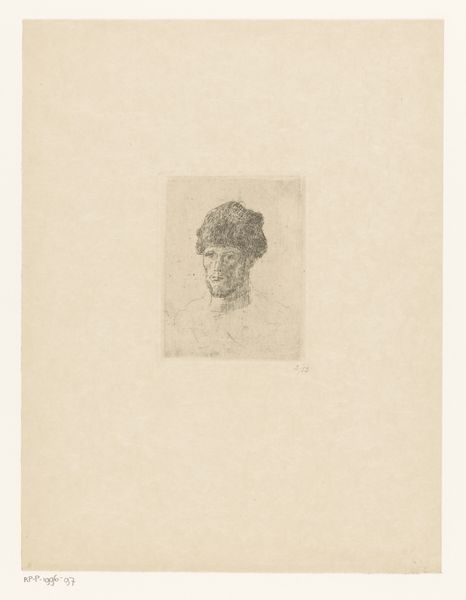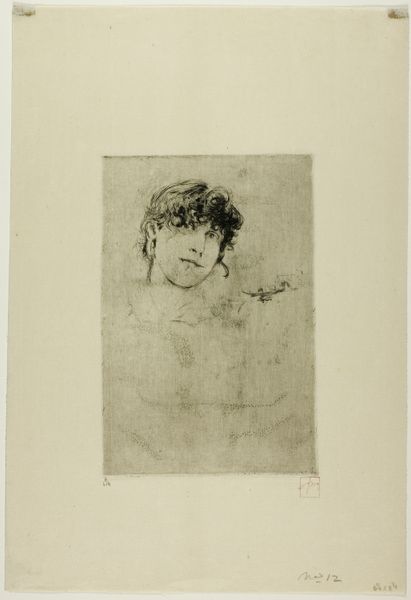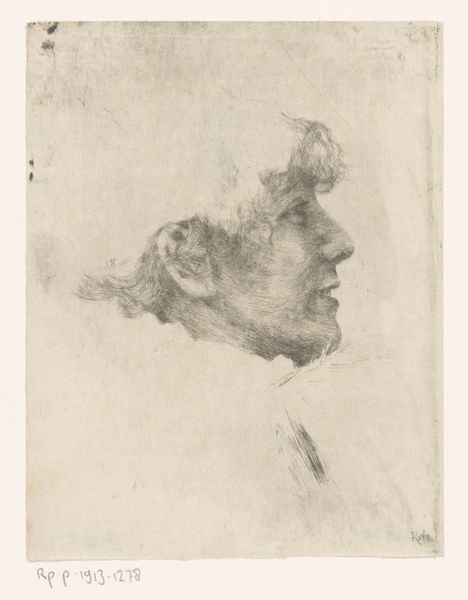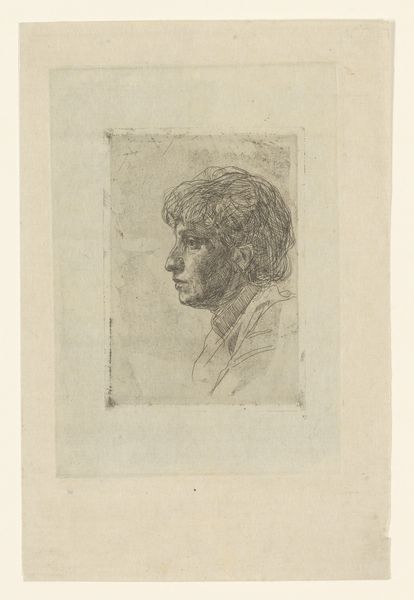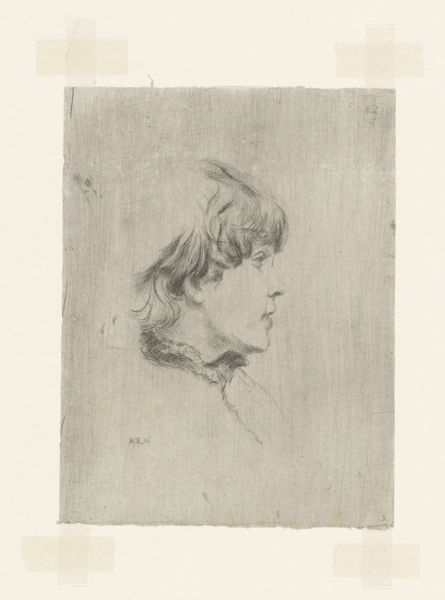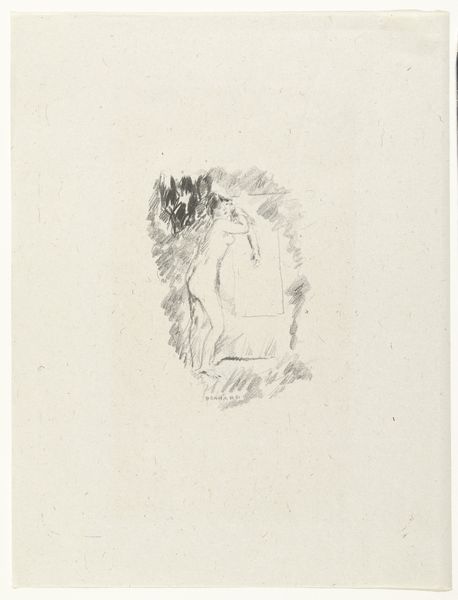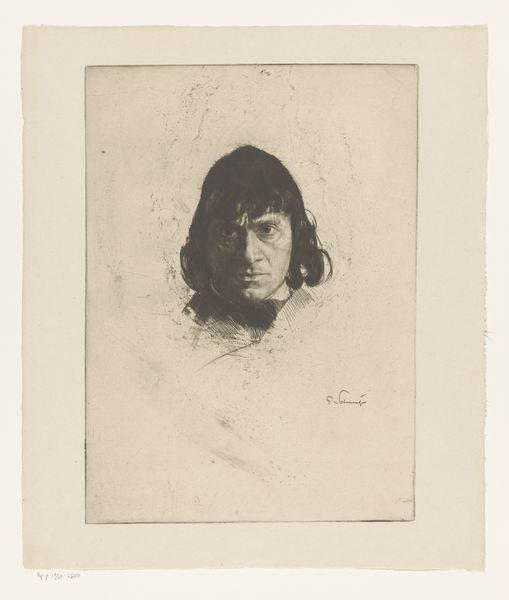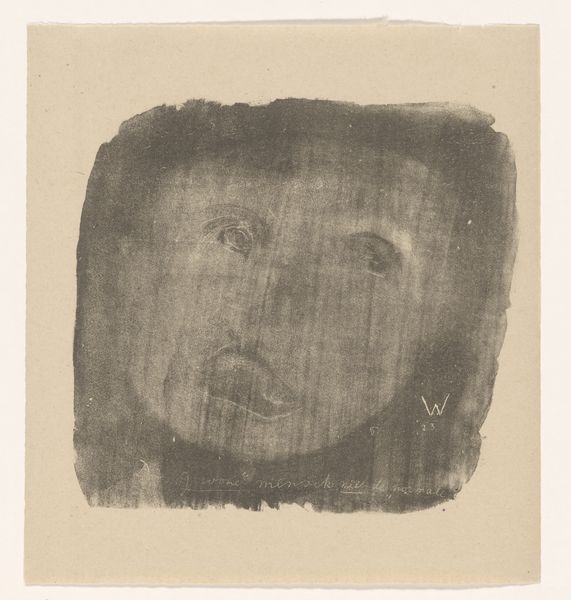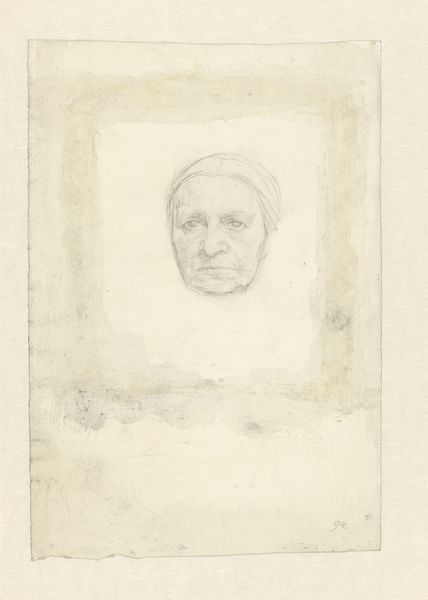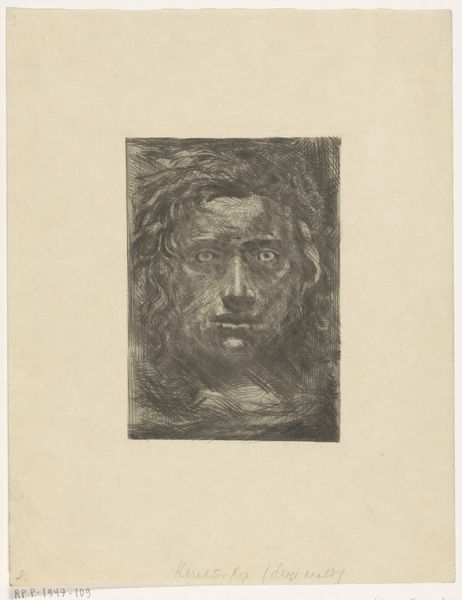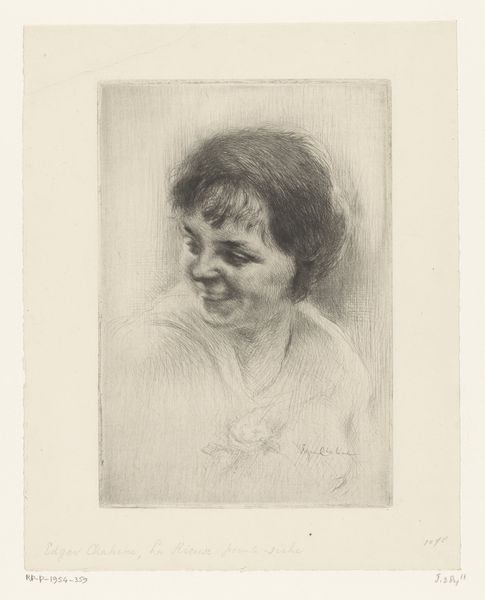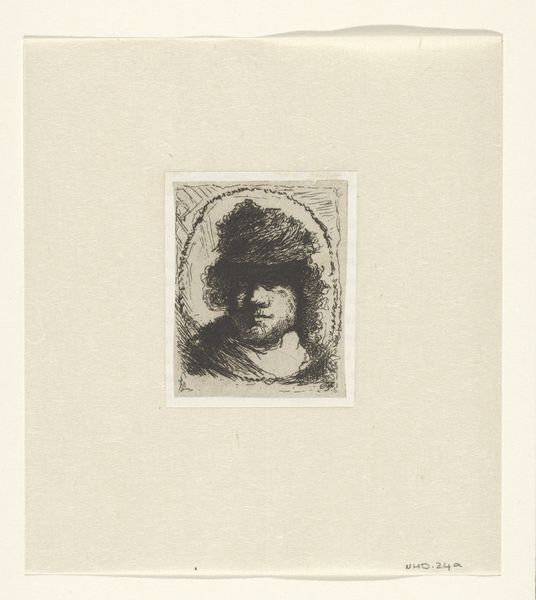
drawing, print, etching
#
portrait
#
drawing
#
self-portrait
# print
#
etching
#
pencil drawing
Dimensions: height 174 mm, width 144 mm
Copyright: Rijks Museum: Open Domain
Editor: We’re looking at Rik Wouters’s "Self-Portrait," an etching made sometime between 1892 and 1916. It’s striking, almost haunting, in its simplicity. There’s a directness in the gaze. What do you see when you look at this work? Curator: I see a soul laid bare, don't you think? Wouters offers us something quite intimate here. The sketchiness, the raw quality of the etching, it feels like a fleeting glimpse into his inner world. Do you get the sense that he's trying to capture not just his likeness, but also something deeper? The emotional weight, the very act of self-reflection itself… I'm curious, what is he asking of us? What does he want us to *see* in him? Editor: It’s as if he’s asking "Do you see me?". Maybe that rawness makes it feel more genuine than a more polished portrait might. How much of that do you think is intentional? Curator: Oh, entirely intentional, I'd argue. Etching itself is such a physical, almost aggressive medium, scratching into the plate… it echoes, perhaps, the internal struggle. A conversation, quite a noisy one. Is he a person with too many voices? What story do they all tell? The way he renders his own features, the somewhat sunken eyes and sharply defined brow – what do they mean to us? He looks both vulnerable and intensely focused, which is quite a magic trick when you only have the barest tools at hand, and just think how that bareness informs our experience of the final piece. The power is in what *isn't* there, perhaps as much as what *is*. Editor: It really makes you wonder about the man behind the art. Thanks, I'll look at self-portraits very differently from now on. Curator: Exactly, this piece now reminds me to ask more, not less. Never stop digging beneath the surface.
Comments
No comments
Be the first to comment and join the conversation on the ultimate creative platform.
